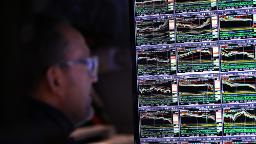[ad_1]

New York
CNN Business
—
Most of 2022 has been pretty dismal for investors, and Monday was no exception: The Dow fell about 500 points, or 1.5%, Monday.
Still, the stock market remains in the midst of one heck of a fourth-quarter rally. The Dow enjoyed its best month in nearly a half-century in October and it’s up nearly another 3% in November. The-chip index is down only about 7% for 2022 — and just 8% below its all-time high.
It would be a stunning comeback if the Dow reclaims all its lost ground and finishes the year in positive territory. As recently as mid-October the Dow was in bear-market territory for 2022, down more than 21%.
What’s happened? Top industrial stocks in the Dow such as Boeing
(BA), Caterpillar
(CAT) and Honeywell
(HON) have surged. So have shares of retail/consumer giants Walgreens
(WBA), Home Depot
(HD) and Nike
(NKE), as well as leading financials Goldman Sachs
(GS) and JPMorgan Chase
(JPM).
The S&P 500 and Nasdaq are still pretty deep in the red for 2022, off 17% and almost 30% respectively. Both indexes were down more than 1.5% Monday. But even those indexes have rebounded sharply from their year-to-date lows in recent weeks.
There are a few factors at play. First, there’s a growing sense that the Federal Reserve might be done with the most significant portion of its massive rate hikes. Inflation seems to be peaking.
And there are hopes that the US economy will either experience a so-called soft landing or just a mild recession. If that were to happen, consumer spending may not fall off a cliff. Neither would corporate profits. That would be good for stocks.
Still, some market watchers wonder if the explosive market rebound of the past few weeks has gone too far too fast. Are investors suddenly too giddy? The CNN Business Fear & Greed index, which measures seven indicators of market sentiment, is now showing signs of Greed and is moving closer to Extreme Greed levels.
But others believe the market rebound may be warranted, especially for stocks that conservative investors love — such as companies that pay healthy dividend yields.
“We think stocks could stabilize. Inflation seems to be cooperating. So far earnings are too,” said John Augustine, chief investment officer with Huntington Private Bank. “But we favor income over growth.”
Augustine said investors should “nibble” at the market as opposed to jumping headfirst into riskier stocks. He noted that the S&P Dividend ETF
(SDY), which owns high-yielding companies such as VF Corp
(VFC). (owner of The North Face and Vans), IBM
(IBM) and 3M
(MMM), is actually up 1% this year.
Some analysts are warning that the broader market selling may not be over, however.
“I see a lot of similarities to the downturn of 2000. There were several times when the stock market came back and then went back down,” said John Duffy, co-founder of Trending Stocks.
Following the bursting of the tech bubble in 2000, stocks traded in a fairly tight range for nearly three years and the Nasdaq lagged the Dow and S&P 500 by a wide margin. That could happen again.
Duffy said he’d also be wary of consumer stocks given continued concerns about the economy and the eventual impact of rate hikes. But he thinks energy stocks could be more resilient, and that industrials and materials stocks are also attractive.
Source link



